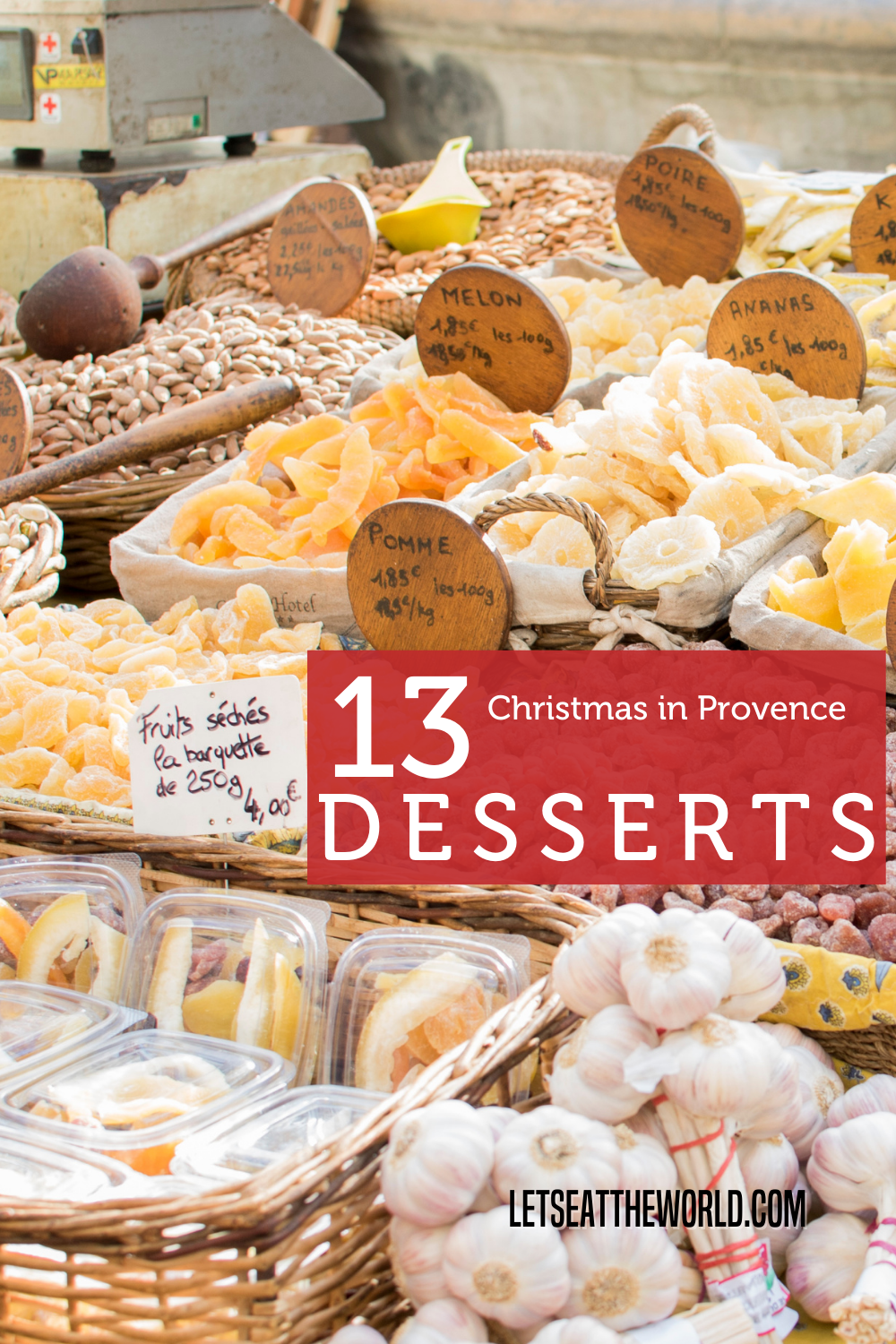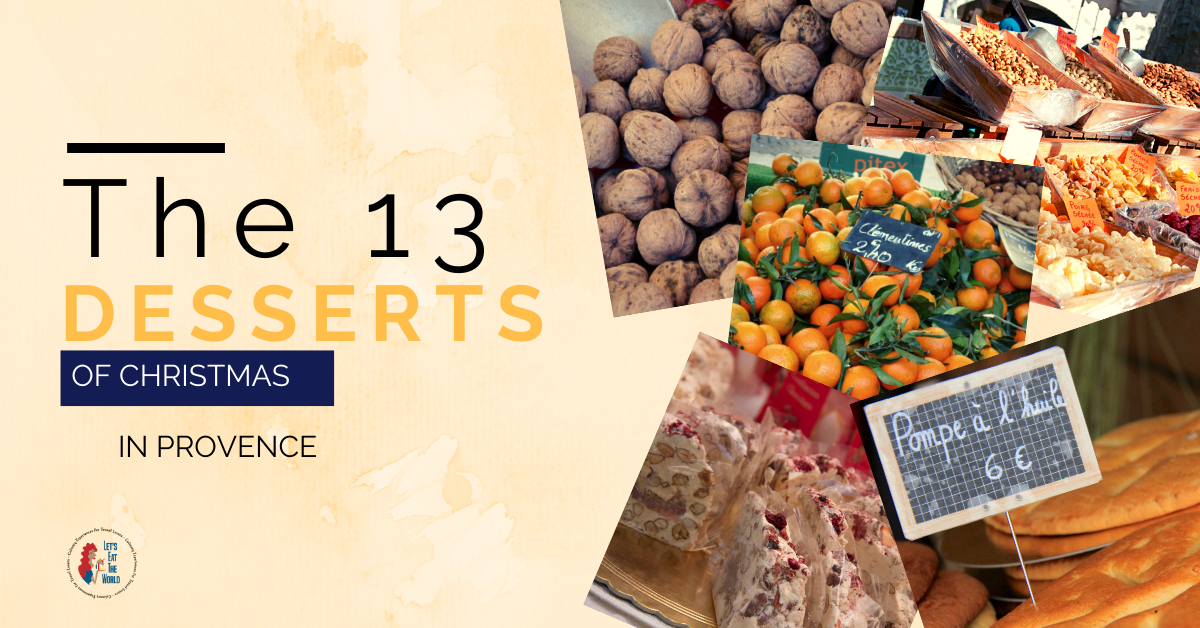
13 Desserts of Christmas in Provence
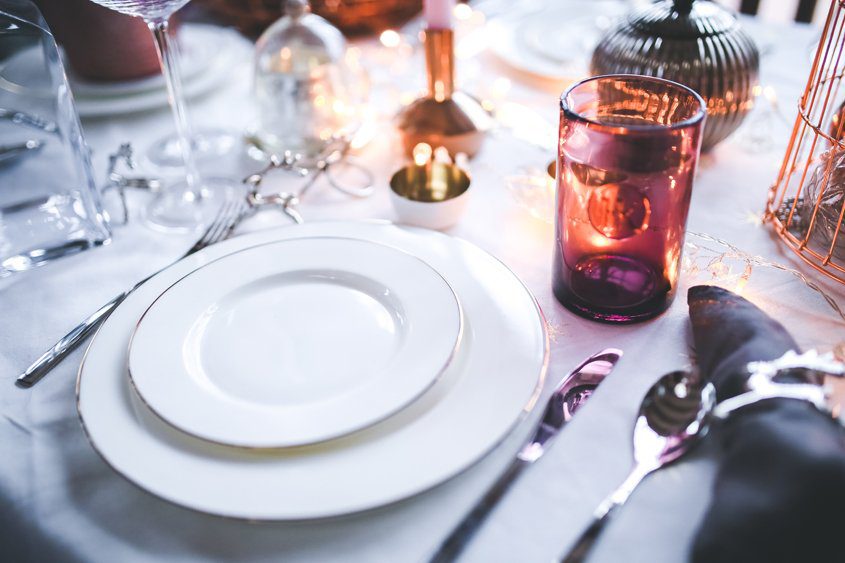
Post by Carolyne Kauser-Abbott of Perfectly Provence
A buffet table laden with 13 desserts! How could the French be so smug as to think that North Americans with our turkey-centric Christmas dinners, stuffing, cranberry sauce, mashed potatoes, and a variety of sides are excessive? Or so I thought when I first heard about this holiday tradition.
However, like most customs in the South of France, there is a historical and religious foundation that begins to make sense once you peel back the layers.
Christmas celebrations are focused around the evening before December 25th when Provençal dinner tables are set with three white tablecloths for the gros souper (translation: big supper). The symbolism surrounding the table preparation is deliberate, the three layers of white fabric represent the holy trinity. The table decorations are not elaborate, but rather simply an acknowledgment of the fruits of agricultural labour each year – sprouted wheat from the Feast of Sainte Barbara, and carafes of sweet wine (vin cuit) from the fall harvest.
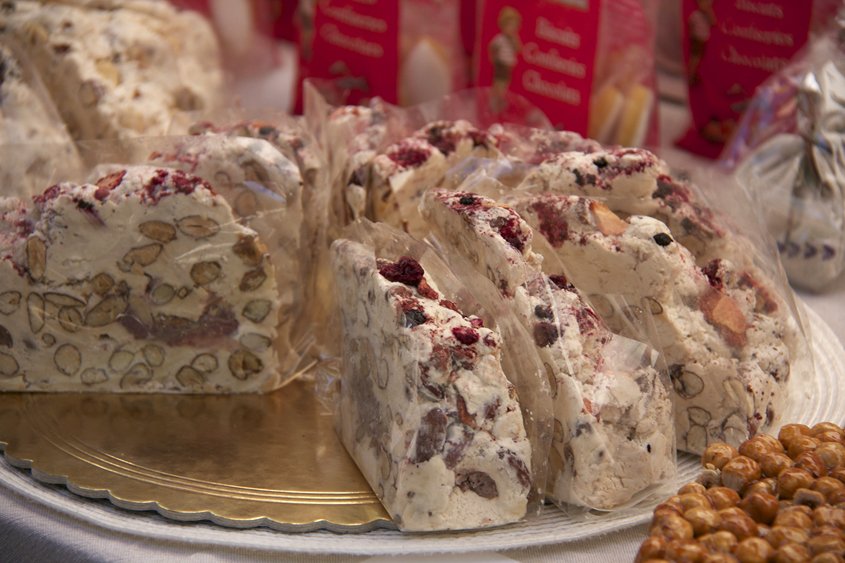
A typical Christmas Eve meal in Provence is meatless, on the lighter side but, not insignificant with seven fish and vegetable dishes. These plates might include omelettes, salted cod and potatoes – brandade de morue, ratatouille and a local garlic soup. The number of dishes is to represent Mary’s seven sorrows.
Following midnight mass, it is time for the 13 desserts. The amount has nothing to do with a baker’s dozen but rather is equal to the number of participants around the table at the Last Supper; Jesus and his 12 apostles. The exact make-up of les treize desserts is not prescriptive. However, the sweets generally fall into four categories: dried fruit and nuts, fresh seasonal fruit, fruit preserved in sugar syrup, and sweetened bread.

Several religious orders of monks (Augustin, Carmelites, Dominicans, and Franciscans) were prevalent during the Middle Ages in Provence. “The four beggars” are represented by dried fruit (figs, raisins, apricots) and nuts (walnuts, almonds, hazelnuts).
Two kinds of nougat (black and white) are typically found in the dessert mix to symbolise both good and evil. Black nougat is made with local almonds and honey and tends to be quite hard. The white version has hazelnuts and pistachios; it is generally softer, but sticky. As a note, these delicious sweet treats can be rough on your teeth, so small bites are a good precaution. Why not try your hand at making a frozen nougat.
Candied fruits may include the Calisson d’Aix (a local specialty with candied melon and almonds a little like a marzipan), fruit preserved in syrup, or fruit jellies and pastes.
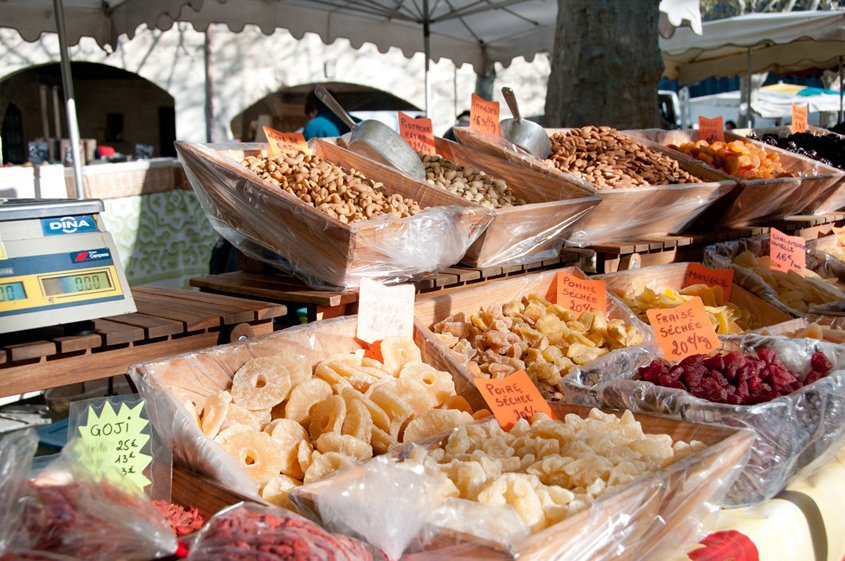
With the approach of December, Provencal markets are often an array of colours with bright citrus (orange, tangerines, clementines), apple and pear varieties, and of course grapes. Enjoying the Spoils of the French market, you’ll be sure to find all that you need to include in the buffet.
No dessert table would be complete without a family’s version of local sweet bread made with olive oil. The pompe à l’huile or fougasse looks a little like an oversized pretzel but has nothing to do with that salty snack. This bread has the texture of a brioche and is flavoured with anise or citrus or other spices. No Provencal native would ever cut the pompe à l’huile with a knife, and it should be torn by hand – like the breaking of the bread for the apostles.
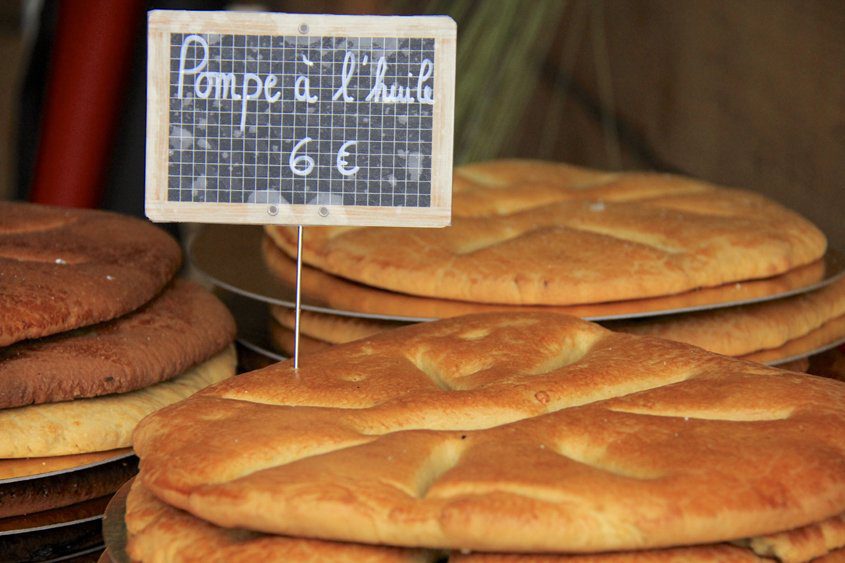
So now it is well after midnight, and there is no way you could eat more dessert. No worries, the table will remain set for three days to share with guests who may come to visit during the holidays.
Other Photos: Carolyne Kauser-Abbott
Pin this post:
In search of holiday gift ideas? Why not give your favorite food & travel lover a taste of France with a Week in Uzès

